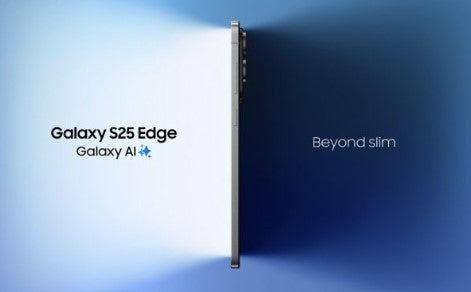Samsung has launched the Galaxy S25 Edge, a sleek smartphone priced at $1,099. With impressive specs and design, its success will hinge on meeting consumer expectations in a competitive market for slimmer devices.

The Samsung Galaxy S25 Edge (S25 Edge) is a remarkable addition to Samsung’s smartphone lineup, measuring just 5.8mm in thickness and weighing a mere 163 grams. Its 6.7-inch QHD+ Dynamic AMOLED 2X display promises vibrant visuals, while the powerful Qualcomm Snapdragon 8 Elite processor, paired with 12 GB of RAM, ensures smooth performance for multitasking and gaming.
The phone features a robust titanium frame and is protected by Corning Gorilla Glass Ceramic 2, making it both stylish and durable. The S25 Edge offers a 200-MP main camera, a 12-MP ultrawide lens, and a 12-MP selfie camera – users can capture stunning photos and videos, including 4K recordings at 120 frames per second. The phone also offers AI-enhanced zoom capabilities, making it a great choice for photography enthusiasts.
Consumer preferences
Samsung’s decision to launch the S25 Edge during a virtual event at a time that caters to Asian markets indicates a strategic focus on regions where slim phones are gaining popularity. Competing brands, such as Oppo and Tecno Mobile, have already introduced their own slim models, which could pose a challenge for Samsung. However, the success of this device in markets like the US and Europe remains uncertain as consumer preferences can vary widely.
Nevertheless, as OEMs and telcos navigate the complexities of unclear AI use cases and their monetisation, the allure of a marketable feature, such as a thin and lightweight form factor, becomes increasingly significant.

Image credit: Samsung
S25 Edge downsides
Despite its appealing design, the S25 Edge does have some drawbacks. The 3,900 mAh battery capacity is lower than some of its competitors’, raising concerns about battery life for heavy users.

GlobalData Strategic Intelligence
Don’t let policy changes catch you off guard. Stay proactive with real-time data and expert analysis.
By GlobalData
Additionally, the phone’s fast charging capabilities are not as robust as those of other models in the Galaxy S25 series, which may deter some consumers who prioritise quick charging.
Samsung aims to enhance the shopping experience for potential buyers by introducing the S25 Edge with a streamlined security display at retail locations. This approach allows customers to interact with the device more freely, potentially increasing interest and driving sales.
A bold move by Samsung
As the smartphone landscape evolves, the S25 Edge represents a bold move by Samsung to carve out a niche in the competitive market for slim devices. With its combination of style, performance, and advanced features, the S25 Edge has the potential to attract consumers looking for a premium smartphone experience.
However; its success will ultimately depend on how well it meets the needs and preferences of users in an ever-changing technological landscape.
In the midst of this competition, Apple is set to launch its own contender, the iPhone 17 Air, in H2 2025. With a width of just 5.5mm, it promises to be even slimmer than the S25 Edge, possibly shifting consumer attention and further intensifying the battle between these tech giants. The Apple iPhone 17 Air’s slim design presents a clear and marketable attribute that can capture consumer attention, potentially revitalising interest in a brand’s lineup (or distracting from Apple’s AI woes and its tariff turmoil).









 English (US) ·
English (US) ·